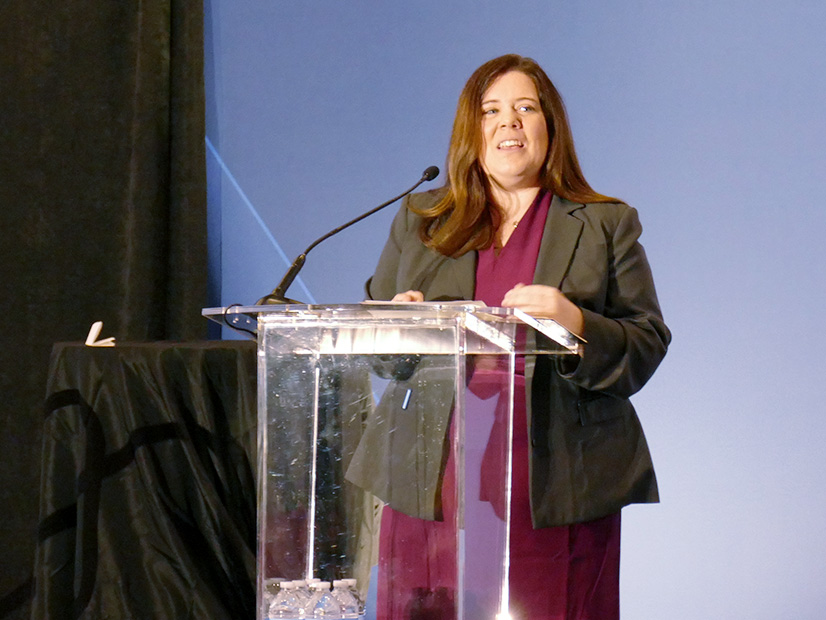
WASHINGTON, D.C. — FERC Commissioner Lindsay See took office the day the Supreme Court issued its Loper Bright decision striking down the Chevron deference to federal agencies, she told the Energy Bar Association’s Mid-Year Energy Forum on Oct. 18. (See Supreme Court Ends Chevron Deference to Administrative Agencies.)
Under Chevron, the courts had given deference to regulatory agencies’ areas of expertise when their governing statutes were unclear on a subject; the decision reclaimed that legislative interpreter role for the courts.
“I would like to think that’s not causally related, that suddenly there was concern that a new federal regulator should not have that sort of discretion and deference to the decisions,” See joked. “But it’s certainly a sobering time to be a federal regulator. We have so many of these shifting legal frameworks and standards in place, and this is also, of course, kind of great transition in the industry as a whole.”
See developed an expertise in energy by working as the solicitor general for West Virginia, which involved litigating many energy cases due to the state’s economy and its attorney general’s priorities. It has been four months since See transitioned from a state litigator to a federal regulator, she said.
“I have been thinking an awful lot about the difference between [what] spurs FERC’s reactive and proactive authorities,” See said.
The bulk of FERC’s work is reactive — it must respond to filings by the industry it regulates, whether changing a market rule, setting rates or siting gas infrastructure. The proactive side comes when FERC issues a broader rulemaking that can change how the industry it oversees operates.
“At least from an outsider’s perspective, when I think about agency work, I think I immediately jump to that second one, to the more proactive policy-making role,” See said. “And that’s not actually the heart of what we do at FERC. So I have been spending a lot of time these first few months really trying to get that first part, to do it well and to really understand that piece.”
While she is in a different role at FERC, the reactive piece is like the legal work she was doing as solicitor general: It often involves multiple parties with different views arguing about the evidence in a docket, and it builds up precedent that future cases are expected to follow.
The reactive role of FERC is limited because it cannot control what comes before and it also cannot separate out parts of a filing that it likes, approving those and denying others, See said.
“I think especially in a time of dynamic change, sometimes incremental change isn’t enough, and there is a need for a more holistic solution that’s able to work more broadly,” See said.
That is where FERC’s more proactive, rulemaking authority comes into play, and See said she has been thinking about it, noting that it differs greatly from her previous role as a state litigator.
“I think there’s a lot of wisdom as well in making sure that the cost of that change is actually worth the benefit, and not just acting for the sake of acting,” See said. “Because taking a lot of time to study and think, and then if the conclusion at the end is actually it’s better for X, Y, Z reasons to stay where we are that can look like not actually doing our job.”
Often change is worth the cost, she said, but that is a test she plans to apply to that proactive role in her new job. Another key to the proactive role is getting a wide range of detailed comments on any potential rule changes.
“I have a real respect for that process because of the different perspectives and voices that can inform those decisions, because I want to make sure that we’re thinking as best we can,” See said. “What are some of the unintended consequences [regarding] a shift in one direction or another? How is that going to play out on the ground?”
Being outside the contested case model seeing how a final decision will actually impact the real world is more difficult, but the more commenters that file the easier it is for regulators to figure out what will happen.
“I think that having sort of a partnership model of listening to different voices and perspectives is what can make the sort of proactive role, that has such a critical and important space at the time we are now, can make that really effective,” See said.


